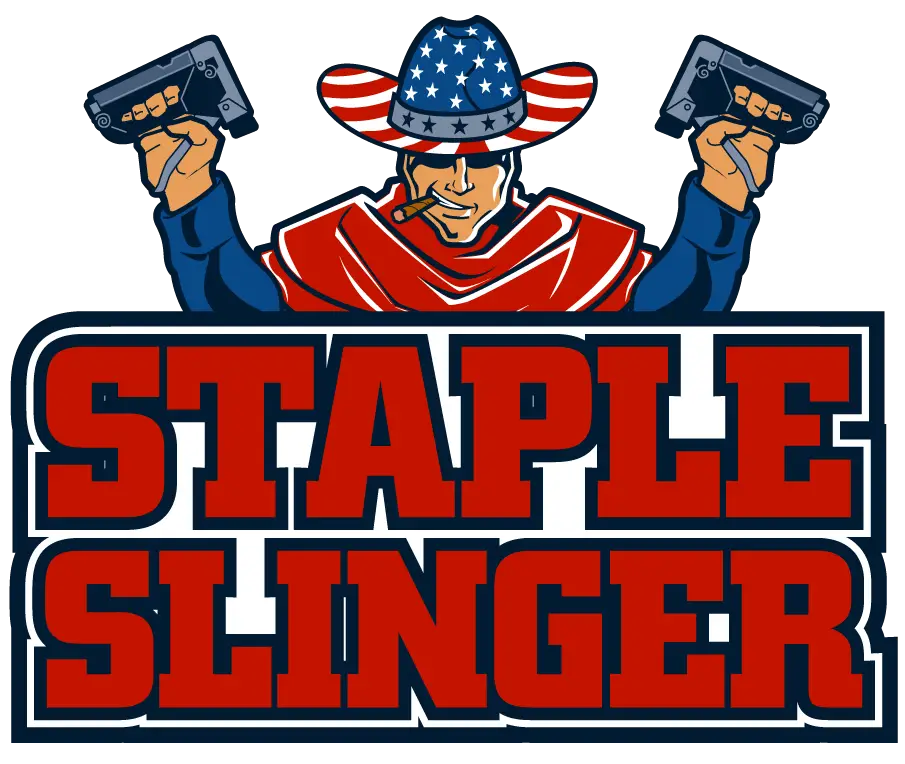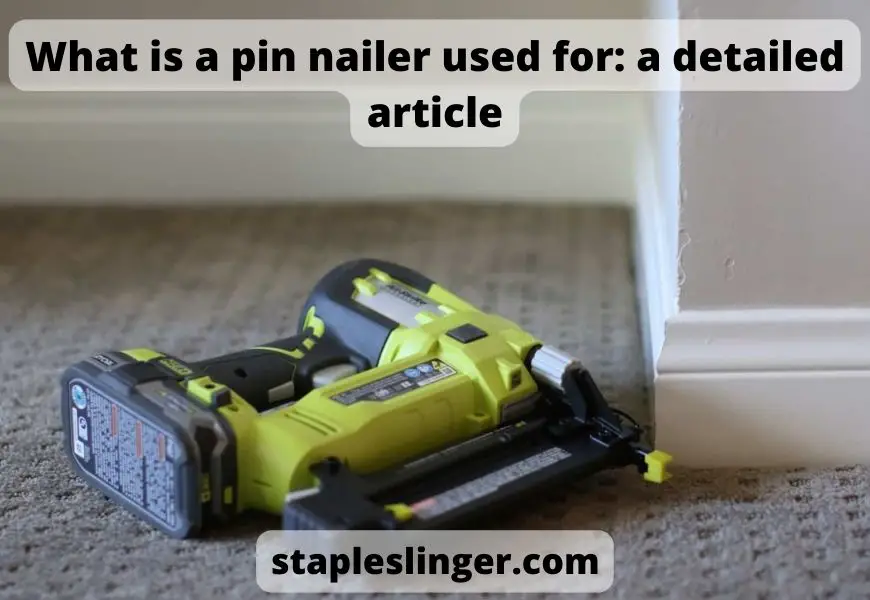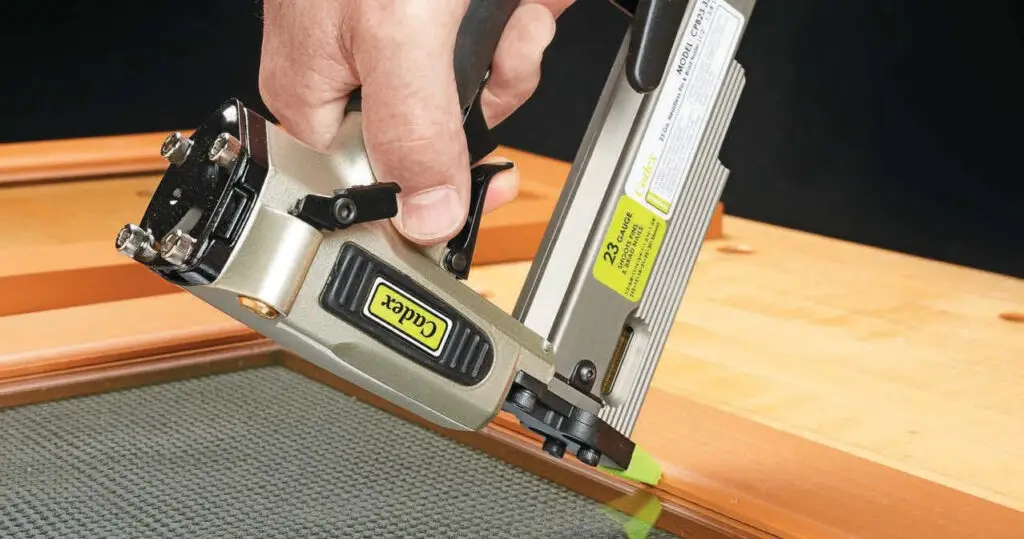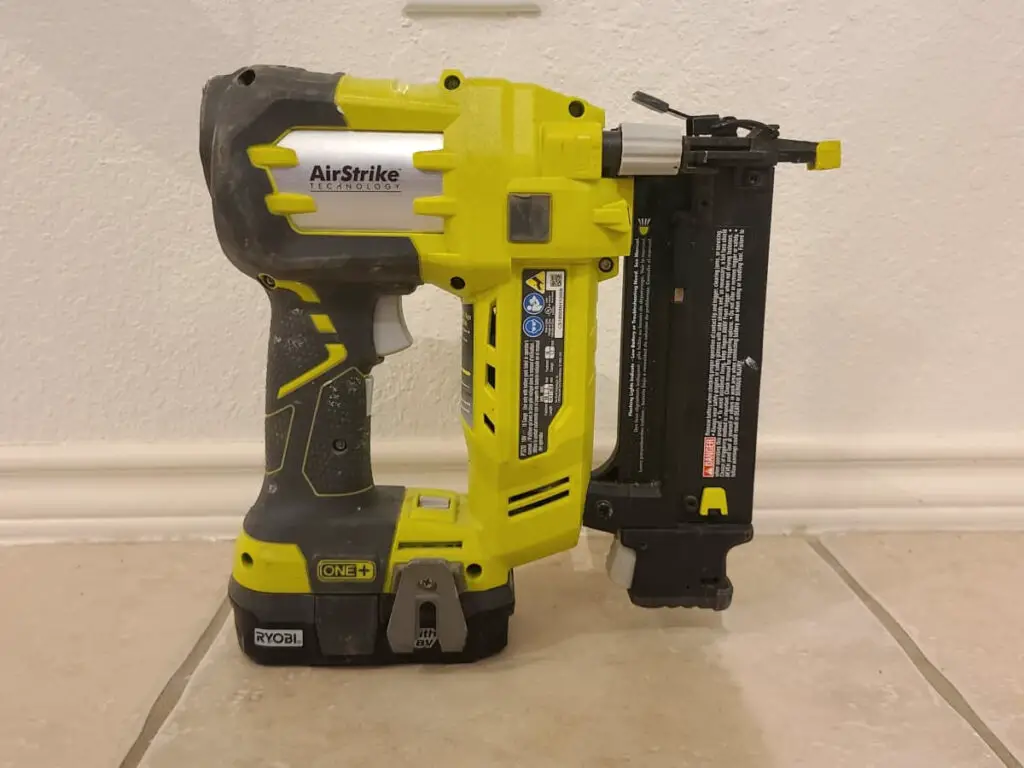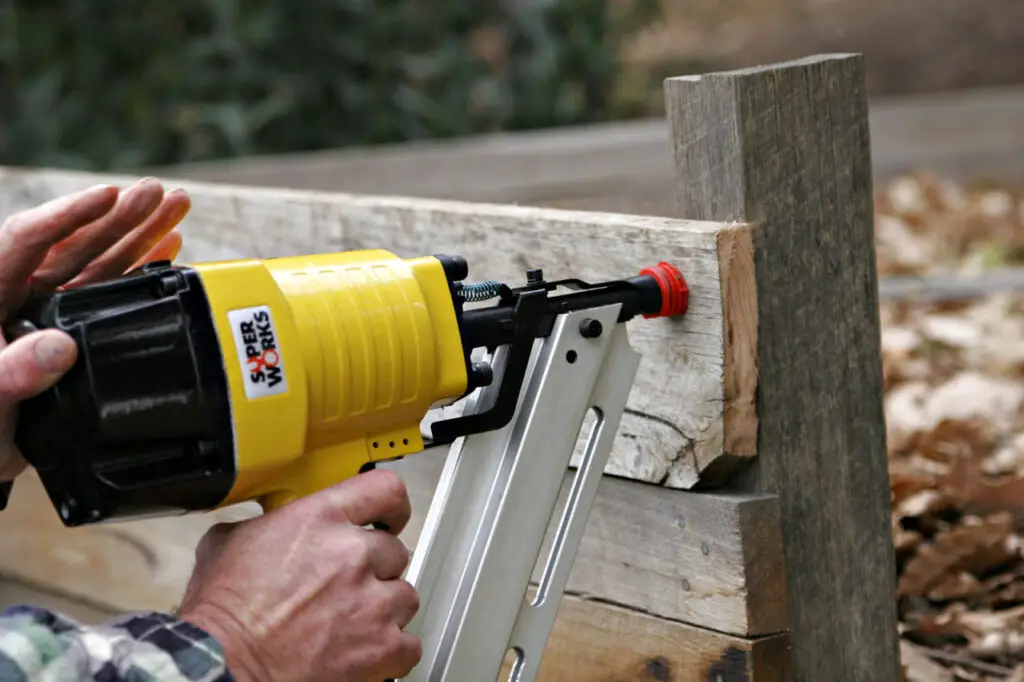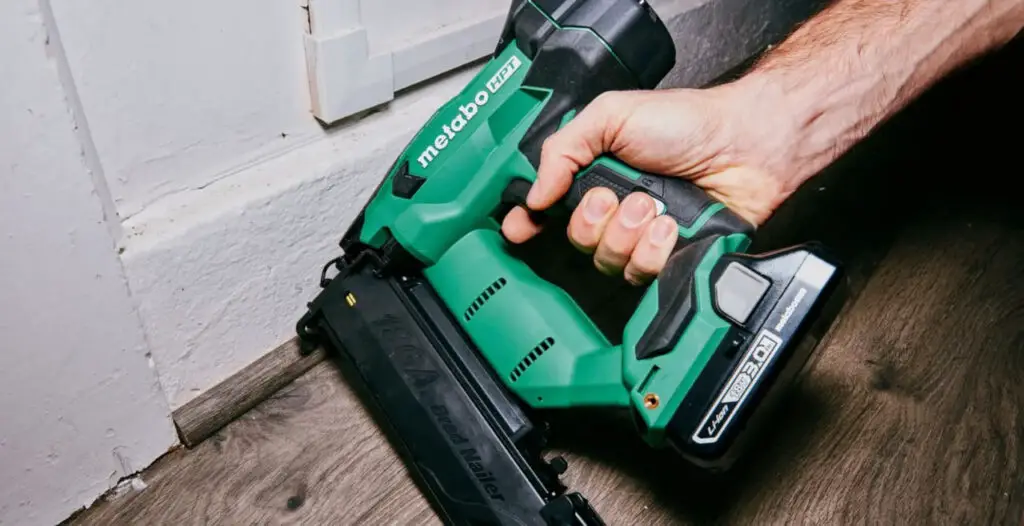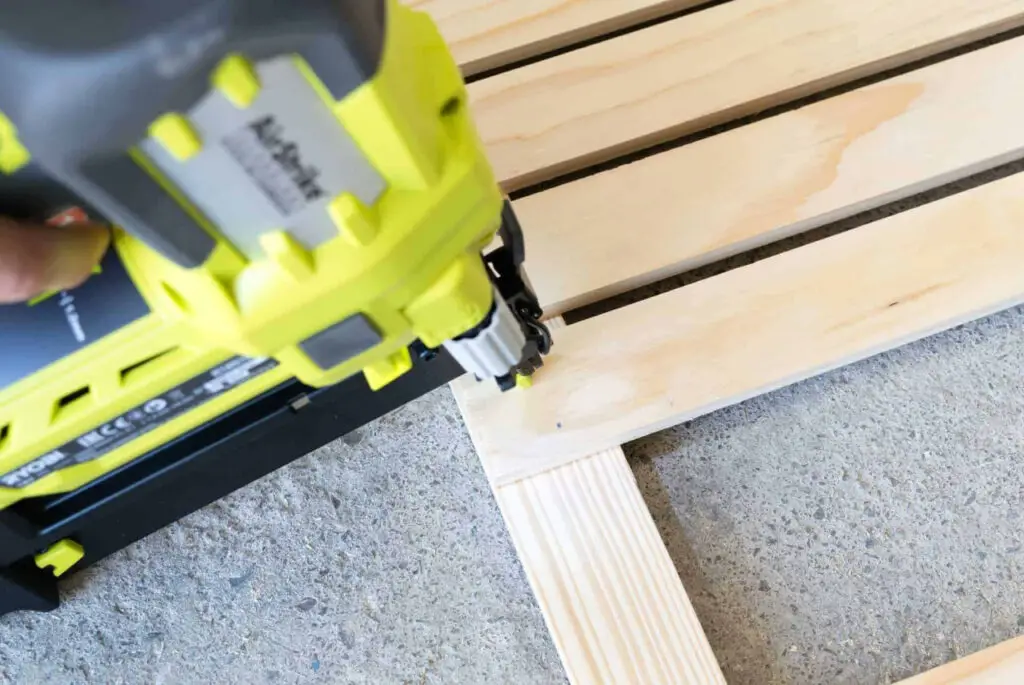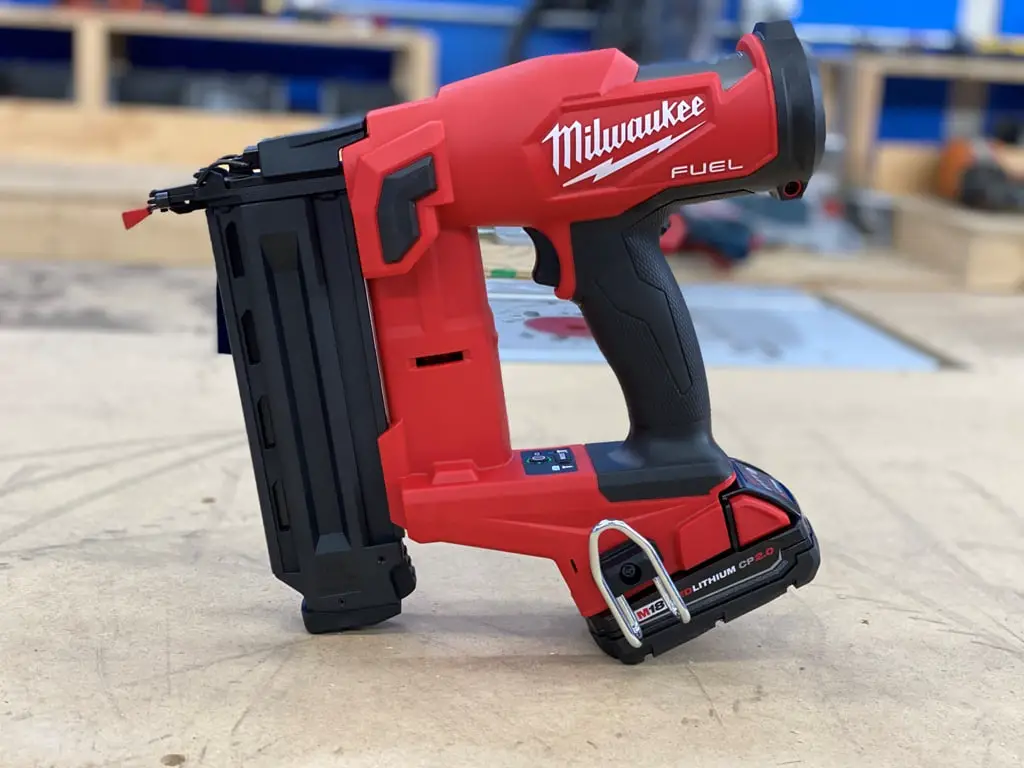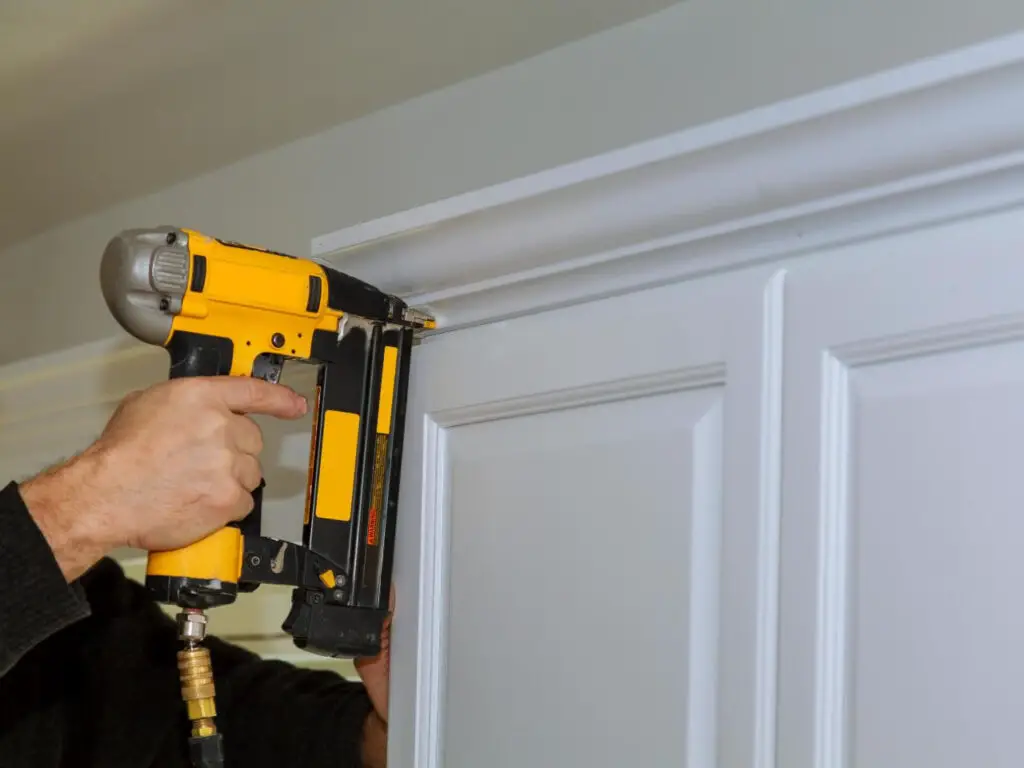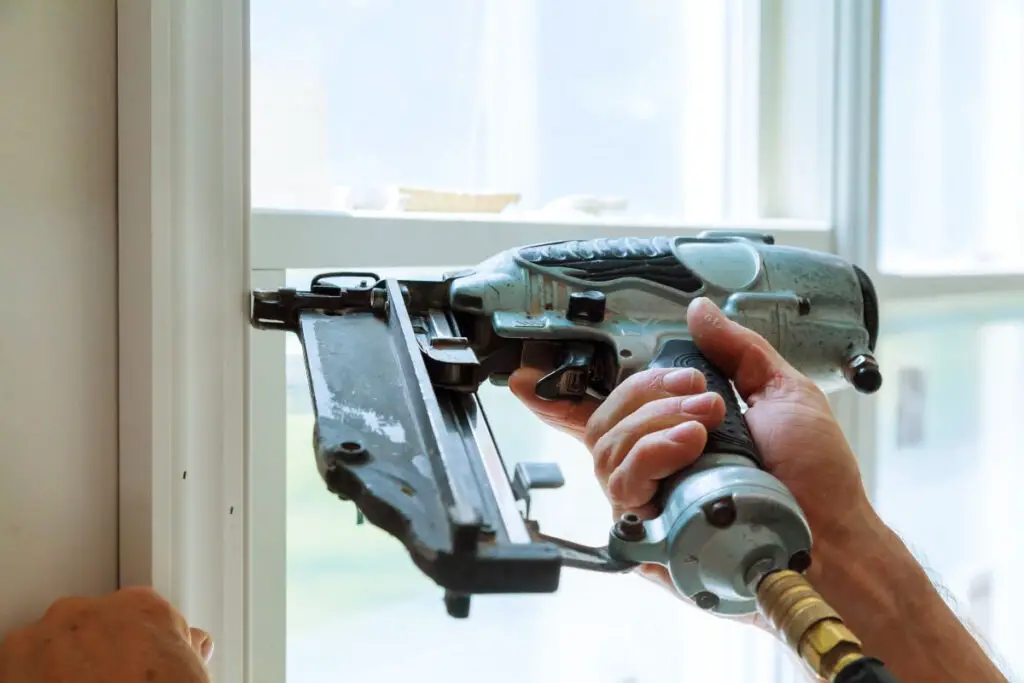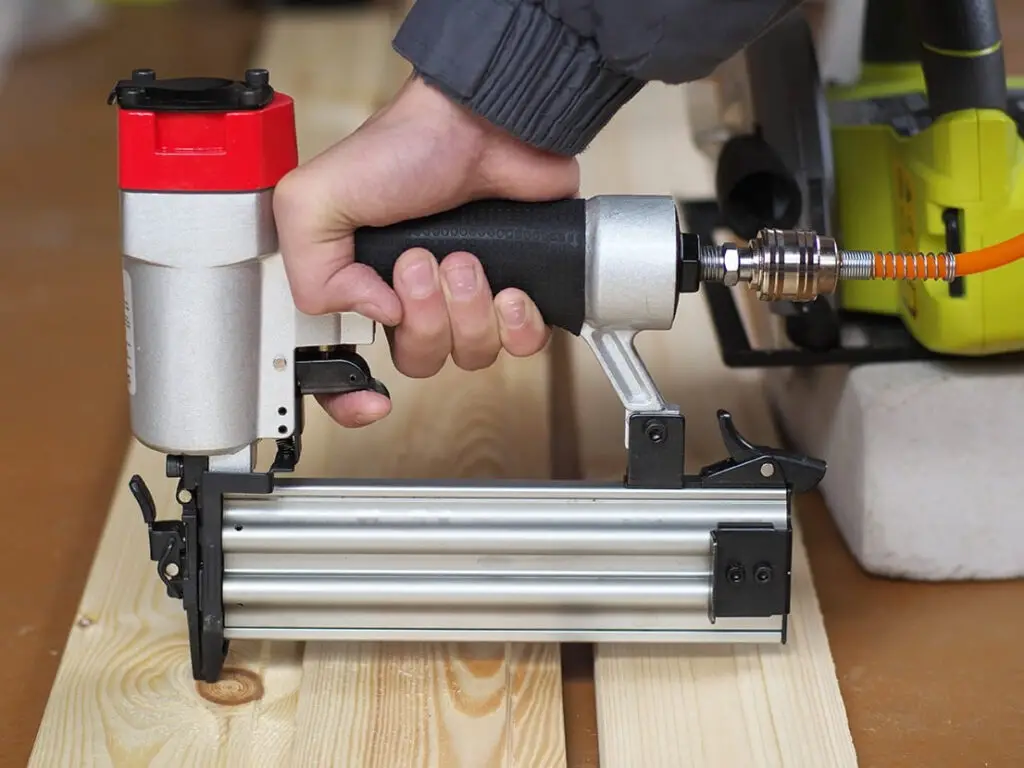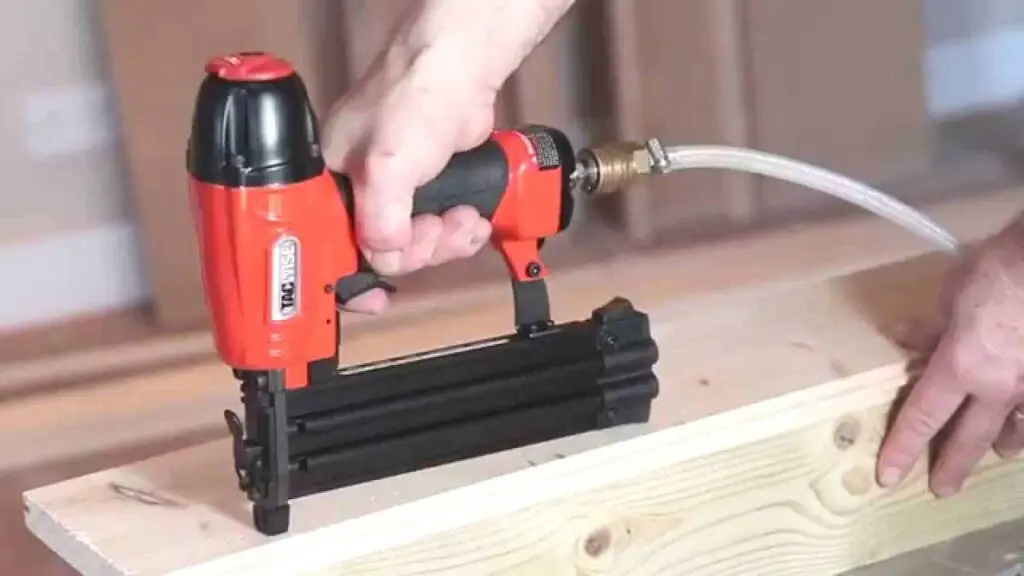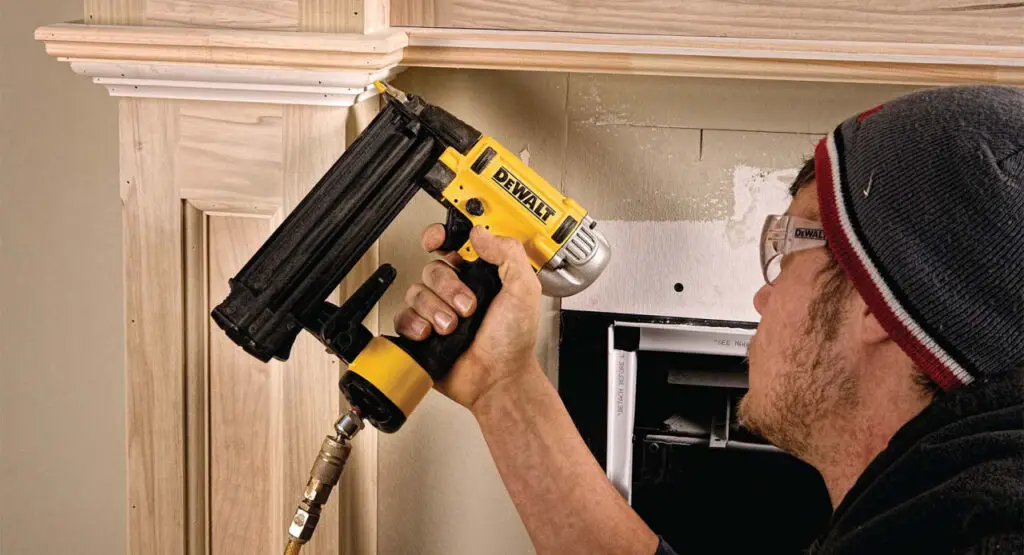What is a pin nailer used for: a detailed article
What is a pin nailer used for? A pin nailer is a very common tool that contributes to the success of most woodworking and carpentry projects, but what is this tool? and what is it used for? Everything you need to know about pin nailers will be carefully explained in this article.
What is a pin nailer: overview
Pin nailers are specialized pneumatic nailers used for fastening thin materials, such as delicate wood trim. It works by inserting thin, pin-shaped nails into the workpiece. These tiny, headless nails resemble a sewing pin in appearance and typically range in gauge size from 23 gauge pin nailer to 18. They leave behind tiny holes that are easily filled with a wood filler.
The interior components of a pin nailer are enclosed by the main housing, which can often be made of lightweight materials like aluminum. The grip is specifically designed for long-term and comfortable use. A pin nailer’s magazine holds the pin nails or fasteners. Usually, it’s a straight magazine that can hold several pins.
The pin’s ability to fire pins is controlled by the trigger mechanism. It can be a contact (bump) trigger, which allows quick shooting with continuous pressure, or a sequential trigger, which requires two actions to fire.
The compressed air produced during nail firing is directed away from the user and the work area by an exhaust port.
Users can choose how deeply the pins are driven into the material using the depth adjustment settings that are available on these nail guns.
The air inlet is attached to an air compressor, which supplies the compressed air required to drive the pins.
Pulling the trigger causes a chamber to release compressed air, which causes the pin nail to be propelled through the barrel and into the workpiece. Using these headless nails is a perfect choice for applications where beauty is important because pin nail holes are significantly small.
Advantages
- Minimal damage. The tiny holes left by this nail gun are nearly invisible, reducing the need for extensive filling or touch-up work.
- Versatility. These nail guns are versatile and suitable for a wide range of applications involving delicate or thin materials.
- DIY projects. A pin nailer is a nail gun that is very handy when it comes to DIY projects that call for discreet fastening without visible nail heads. They are perfect for delicate or complex designs.
- Less finishing. The minimal nail holes and absence of nail heads reduce the need for extensive sanding and finishing when using this nail gun.
Disadvantages
- Difficulty in removal. Among other nail guns, pins from pin nailers are challenging to remove without damaging the material.
- Limited holding power. Due to the small size and thin gauge of the pins used, they have limited holding power compared to larger nails or brads. They may not provide sufficient strength for certain applications.
- Sensitivity. A pin nail can be more susceptible to pulling out or breaking through the surface of the material, especially if the material is soft or thin.
Brad Nailer: overview
A Brad nailer is a popular piece of equipment similar to a pin nailer, it is used to precisely drive brads into a variety of materials. Brads are thin, small-gauge nails that have a slight head, making them nearly invisible when driven into the material.
The Brad nailer allows users to firmly fasten materials without risking damage or splitting thanks to its amazing versatility.
The Brad nail is often referred to as the middle ground of pin nails and finish nails because they are thinner than finish nails but thicker than a pin nail.
They are often used with wood glue to improve the overall strength of the structure as the wood glue dries.
The body of a Brad nailer is often made of robust materials to ensure a long lifespan and durability.
Brads are loaded into the magazine of the nail gun and fired through the tool’s firing mechanism. The magazine design may vary, but it often accommodates a strip of brads.
A Brad nailer features either a sequential trigger, requiring two actions to fire, or a contact trigger, allowing rapid firing with continuous pressure.
The air inlet connects the Brad nailer to an air compressor, providing the necessary pressurized air for driving the brads.
Advantages
- Versatility. Brad nailers are quite versatile and they have a wide range of uses.
- Accuracy. In woodworking jobs, the ability to accurately position a Brad nail with a Brad nailer assures a neat, and amazing finish.
- Efficiency. A Brad nailer as a nail gun has good firing capabilities for increased work efficiency, enabling users to complete projects quickly.
Application: Pin nailer vs Brad nailer
While the two tools may seem similar at first glance, they have distinct characteristics that make them suitable for different applications.
Due to their small size, pin nails leave nearly invisible holes in the material, making them ideal for delicate and detailed work. Brads are thicker and have a small, visible head. They leave more visible nail holes and they are ideal for applications that require a bit more holding power compared to pin nails.
Brad nailers are extensively used in finish carpentry for applications like crown molding, baseboards, and trim installation. The slightly larger Brad nail provides more holding power compared to pin nails.
For securing delicate trim, crown molding, baseboards, and other decorative pieces, pin nailers are frequently utilized. The small hole left by pin nails is easily concealable and requires minimal touch-up work.
Pin nailers are required for firmly connecting thin panels, fragile moldings, and other components in cabinetmaking without running the danger of splitting or surface damage.
A Brad nailer is used to assemble parts, fasten decorative accents, and fix back panels while manufacturing furniture. This gives the furniture strength and stability.
A Brad nailer is also used to secure cabinet face frames, attach thin panels, and assemble cabinet components, providing a balance between holding power and surface finish.
Price: Pin nailer vs Brad nailer
The price of a nailer is significantly influenced by the brand and particular model it is. Established brands with a reputation for quality and durability may have higher price tags compared to less popular known brands.
The nailer’s price may also vary depending on the materials used in construction and the overall build quality. Durable, high-quality materials generally contribute to a higher cost.
In general, pin nailers cost depending on the factors mentioned earlier. Brad nailers tend to have a slightly higher price range compared to pin nailers. The price depends on the brand, model, features, and specifications.
You should also note that the range of nail sizes a nailer can accommodate and its magazine capacity can influence its price. Nailers with a wider range of nail sizes may be more expensive.
Accuracy: Pin nailer vs Brad nailer
Both nailers are accurate, but the applications for each vary depending on the size of the nails they use.
Pin nailers are unmatched in tasks like delicate trim work and intricate woodworking, where accuracy, little surface damage, and practically imperceptible fastening are essential.
Brad nailers are adaptable for a wider range of applications, from finish carpentry to furniture assembly, thanks to their amazing holding force.
Brad nailers offer the advantage of precise placement combined with a bit more holding power due to the larger Brad nails. This makes them suitable for a broader range of applications.
With adjustable depth control features, that come with many Brad nailers, users can precisely control the depth of nail penetration for improved accuracy.
Size: Pin nailer vs Brad nailer
When selecting a nailer, nail size is an important factor to take into account because it determines the fastener’s gripping power and the tool’s effectiveness for different applications. Both pin nailers and Brad nailers use different sizes of nails, measured in gauge.
The gauge represents the thickness or diameter of the nail and a lower gauge indicates a thicker nail.
The differences in nail sizes between pin nailers and Brad nailers have a huge significance.
Pin nails are extremely slender, ranging from 23 to 18 gauge. The higher the gauge number, the thinner the pin.
These nails are often referred to as “pins” due to their minimal thickness. Due to their small size, pin nails are virtually invisible, making them ideal for projects where concealing fasteners is crucial.
Pin nails have a slightly smaller diameter than Brad nails. Usually, they are between 18 and 16 gauge. Brad nails have a bigger diameter than pin nails and are frequently employed for jobs that need a little bit more gripping force.
Versatility: Pin nailer vs Brad nailer
Pin nailers excel in attaching delicate trim, crown molding, baseboards, and other decorative elements, providing a professional finish with minimal surface disruption.
A Brad nailer can handle a range of Brad lengths and gauges, providing versatility for different project needs.
Most pin nailers feature depth adjustment settings, allowing users to tailor the depth of penetration based on the material, enhancing versatility.
However, they are best suited for thin or delicate materials and they may not provide a secure hold in thicker wood.
Holding power: Pin vs Brad nailer
Pin nails are exceptionally thin due to their high gauge. This thinness affects their holding power, making them suitable for lightweight and delicate applications.
The small diameter of a pin nail reduces the surface area of the nail in contact with the material, impacting the overall holding power.
The holding power of a pin nail is often designed for temporary fastening or for applications where minimal force will be applied.
The small head-on Brad nails increase the surface area in contact with the material, enhancing the holding power compared to headless pins.
Brad nails provide a more secure and robust connection compared to a pin nail, making it suitable for applications that require a bit more strength.
Safety tips for pin nailers
- Adjustments. When you use a pin nailer check and calibrate the depth adjustment settings to suit the thickness of the material you’re working on.
- Oil the Nailer. Apply a few drops of oil suitable for pneumatic nailers to the nail gun regularly to ensure smooth operation and prevent rust.
- Check Nails. Ensure that the nails used are the correct size and type for the nailer, and remove any damaged or bent nails from the magazine.
- Replace Worn Parts. Replace any worn-out or damaged parts to ensure brilliant performance and safety when you use a pin nailer.
- Jammed Nails. If nails jam, disconnect the power source, clear the jam following the manufacturer’s instructions, and inspect for any issues that may have caused the jam.
FAQs:
A pin nailer is a tool that is used for fastening delicate trim, moldings, and other materials where fastening is necessary, they can also be used for securing wood while glue dries.
The major difference between a Brad nailer and a pin nailer is that a Brad nail is a pin nailer used for pin nails which are small while a Brad nailer is used for a larger Brad nail.
A pin nailer uses much smaller and headless pins while a finishing nailer uses nails with a visible head therefore they are not the same.
Yes, pin nailers are very effective for crown molding because they are headless and they leave minimal visible holes.
The primary difference is that Brad nailers can provide a bit more holding power compared to pin nailers.
A pin nailer uses extremely thin, headless pins while a straight-finish nailer uses larger nails with visible heads.
A crown stapler is used to fasten fabric to wood, they are very effective but leave visible holes on the wood surface.
Pin nailers are categorized under nail guns. Nail guns include other tools like framing nailers, a crown stapler, and air nailers.
A 23-gauge pin nailer is used to make barely visible fastening in special and delicate woodworking tasks.
Conclusion
A pin nailer is a very useful tool that can come in handy in countless situations, by following safety tips and using this article as a guide you can ensure the safe and efficient operation of your nailer and guarantee perfection in your projects.
Read on site: Best Staplers for 50 Pages (2024)
